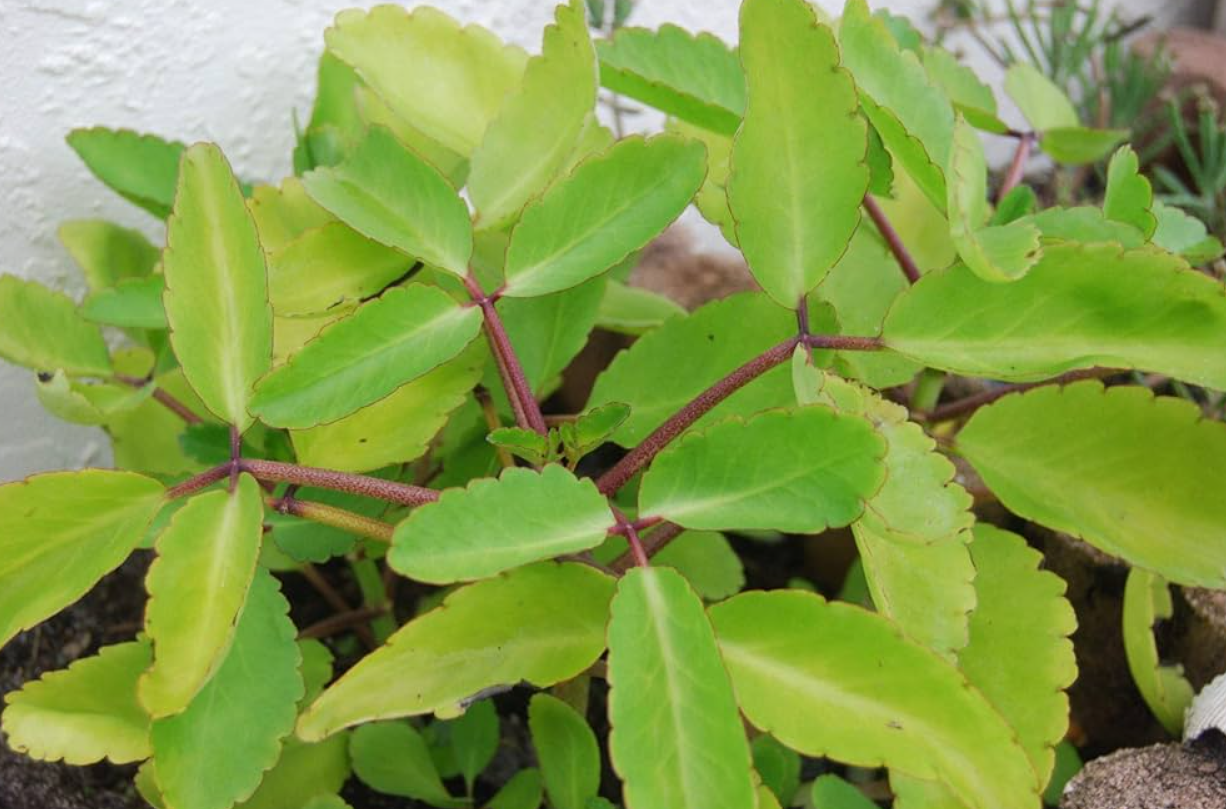Examining the Leaf of Life: Advantages and Drawbacks
Overview of the Leaf of Life
Bryophyllum pinnatum, known as the Leaf of Life, is a succulent perennial plant. It belongs to the Craisulaceae family. Originally from Madagascar, this remarkable plant has spread across tropical and subtropical regions worldwide. It adapts well to a variety of conditions. Because of its hardiness and ease of propagation, Bryophyllum pinnatum is now a common sight in gardens and homes as a houseplant.
History of the Leaf of Life in Herbal Medicine
Many societies have embraced the Leaf of Life due to its reputed therapeutic qualities. People have used it in herbal medicine to treat conditions like skin irritations, digestive issues, and respiratory ailments. Practitioners in countries such as India, the Philippines, and many parts of Africa have recognized the plant’s health benefits for centuries. It is commonly used in tinctures, teas, and poultices, showcasing its versatility in treating a range of medical issues.
Growing and Propagating the Leaf of Life
You can easily grow the Leaf of Life as it requires minimal care. The plant needs moderate watering, as excessive watering can lead to root rot. It thrives best in soil that drains well. While it can tolerate some direct sunlight, it prefers bright, indirect light. Its popularity among gardeners and herb enthusiasts stems from its ease of propagation through leaf cuttings.
Understanding the Leaf of Life’s Role in Holistic Health Practices
Knowing the history and traditional uses of the Leaf of Life lays the foundation for exploring its numerous benefits and potential drawbacks. The plant remains a topic of discussion in herbal therapy, generating both curiosity and caution as interest in natural medicines grows. By examining its properties, we can better understand the Leaf of Life’s role in global holistic health practices.
The Leaf of Life’s Health Benefits
Respiratory Health Support
The Leaf of Life has gained significant attention in alternative medicine due to its therapeutic benefits. Its potential advantages are supported by both anecdotal evidence and scientific research. One of its primary benefits is respiratory health. Compounds in the leaf are believed to have bronchodilator properties, which can help widen the airways and make breathing easier. This may alleviate the symptoms of conditions like bronchitis and asthma.
Wound Healing and Skin Health Benefits
In addition to its respiratory benefits, the Leaf of Life is well known for its wound-healing properties. The sap from the leaf is believed to speed up the healing of small burns, abrasions, and other minor wounds when applied topically. Its antibacterial properties may aid in tissue regeneration and prevent infections. Moreover, its high content of vitamins and antioxidants supports skin health and may accelerate the healing of various skin irritations.

Digestive Health and Anti-Inflammatory Properties
Research suggests that the Leaf of Life can improve digestive health. It is commonly used to alleviate bloating and other digestive issues. The compounds in the leaf are thought to enhance intestinal function and improve the absorption of nutrients. Thanks to its anti-inflammatory properties, the Leaf of Life may also help manage chronic inflammation, offering relief for inflammatory diseases.
The Leaf of Life’s Role in Modern Natural Medicine
The Leaf of Life continues to captivate those seeking natural alternatives to conventional treatments. Its inclusion in both traditional and contemporary herbal remedies highlights its importance. As more people embrace nature-based wellness practices, the Leaf of Life plays an increasingly prominent role in everyday health routines.
Potential Adverse Reactions and Safety Measures
Common Side Effects and Gastrointestinal Discomfort
Although the Leaf of Life is praised for its health benefits, there are potential side effects and safety considerations to keep in mind. While many people may benefit from it, some may experience adverse reactions. Gastrointestinal discomfort, such as nausea, stomach upset, or diarrhea, is a common side effect. Individuals with gastrointestinal conditions or sensitive stomachs should use this herb cautiously.
Medication Interactions and Precautions
Another important consideration is the potential for medication interactions. The Leaf of Life may interact with various medications, including blood thinners, antihypertensive drugs, and those affecting blood sugar levels. People taking medication for diabetes or hypertension should consult their doctor before incorporating the plant into their routine. This ensures no adverse interactions that could affect their health.
Special Considerations for Pregnant and Nursing Women
Pregnant and breastfeeding women should exercise caution when considering the Leaf of Life. Research on its effects in these groups is limited, and the possibility of unforeseen side effects requires careful consideration. It is essential to consult a healthcare provider before use. Additionally, individuals with a history of allergies to plants in the same family as the Leaf of Life may experience allergic reactions, including breathing difficulties or skin rashes.
Risks of Overuse and Toxicity Concerns
As with any herbal medicine, it is important to consider the risks associated with overuse. Some studies suggest that large doses of the Leaf of Life could be harmful and may negatively impact health. To ensure safety and effectiveness, it is crucial to use the plant sparingly and under the guidance of a medical professional.
Comparing the Benefits and Drawbacks
The Positive Effects of the Leaf of Life on Health
Our exploration of the Leaf of Life reveals a range of health benefits, as well as potential adverse effects that should be considered. With properties that can boost immunity, reduce inflammation, and improve digestion, this herbal supplement is well-regarded for its potential to enhance overall wellbeing. The leaf’s rich vitamin and mineral content makes it a valuable addition to holistic health practices.
The Importance of Caution and Moderation in Using the Leaf of Life
Despite its many benefits, the Leaf of Life should be used with caution. Some individuals have experienced adverse effects, such as gastrointestinal distress and allergic reactions. These side effects highlight the importance of understanding your individual health needs and how your body may react before adding any new herbal supplement to your routine.

How to Safely Incorporate the Leaf of Life into Your Health Routine
To safely incorporate the Leaf of Life into your health routine, start with small doses and observe how your body responds. Seeking advice from healthcare professionals, such as dietitians or herbalists, can provide personalized guidance. This ensures that you make well-informed decisions about using the plant as a supplement. Additionally, researching reliable sources will help you better understand its potential health effects, enabling you to weigh the benefits and risks.
Ensuring Safe Use of the Leaf of Life for Long-Term Wellness
Ultimately, using the Leaf of Life carefully can maximize its benefits while minimizing any potential negative effects. Focusing on moderation, awareness, and expert guidance will help you maintain a safer approach to achieving better balance in health and wellness.
